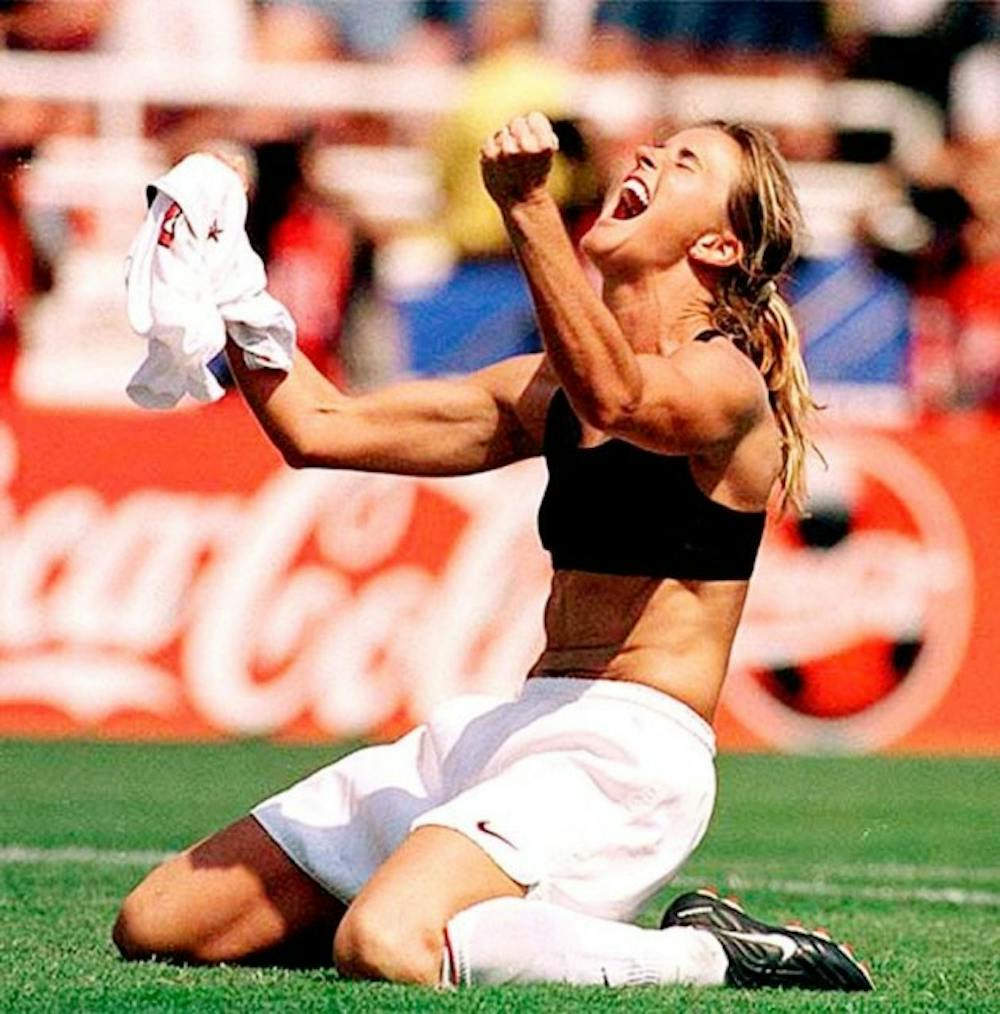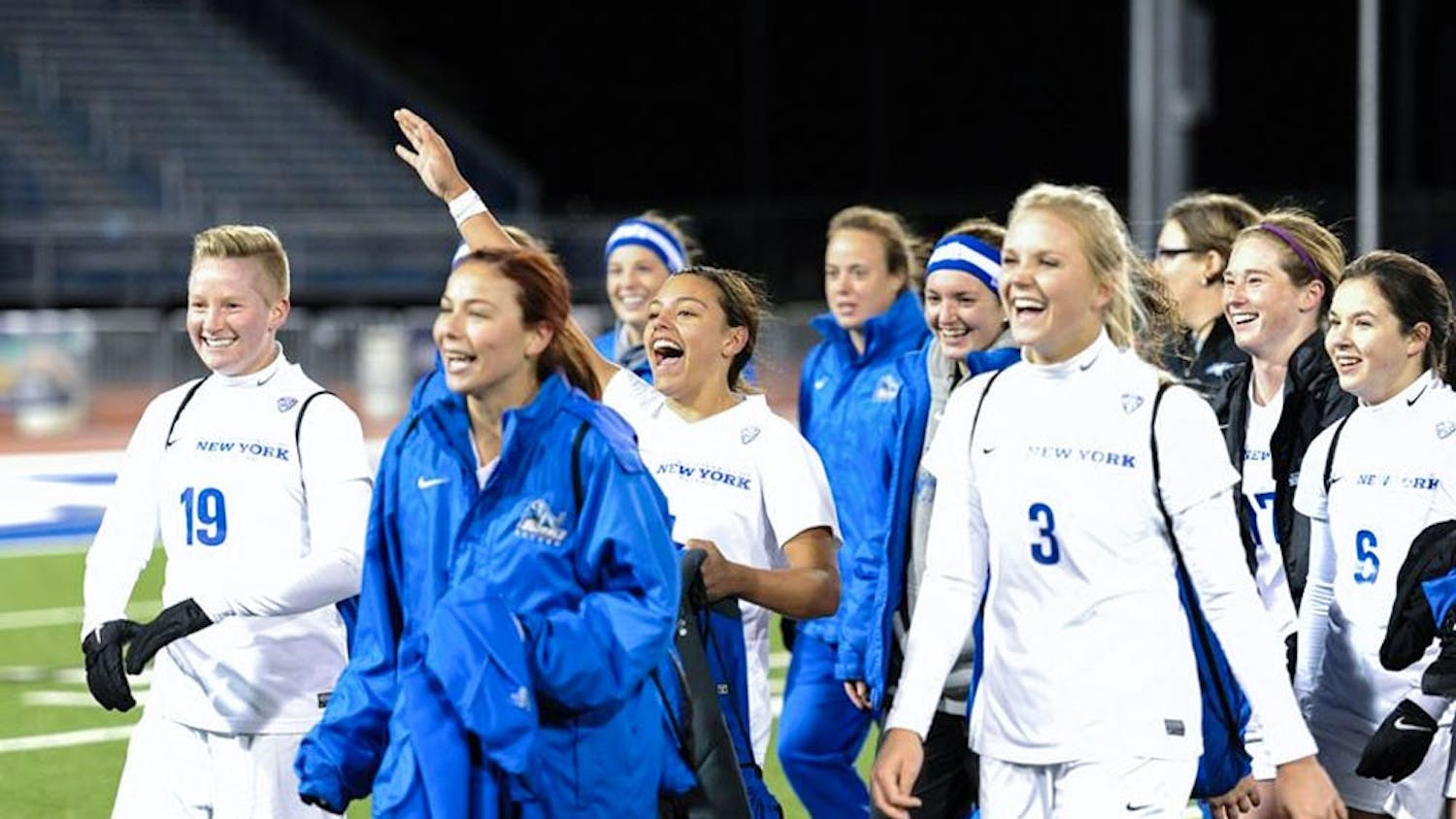The image of a shirtless and celebrating Brandi Chastain on her knees in front of the goal in the 1999 World Cup Final is one of the most enduring images in American sports history.
It came against China during penalty kicks, but it did much more than just win the World Cup - it signaled the arrival of women's sports to the mainstream.
The American players that starred in that game were some of the first to benefit from the Title IX act, which grants men and women equal opportunity in athletics. Thirteen years after that match and 40 years after Title IX was implemented, the influence of both are still being felt.
The current generations of college and professional soccer players have continued to carry the torch of female athletes and reap the benefits of Title IX.
"For me, the '99 game was one of the coolest moments of my life up to that point," said former UB player Anna-Lesa Calvert. "To be able to watch the women's national team on TV was incredible."
The 1999 U.S. Women's World Cup team had a significant and lasting effect on the sport of women's soccer in the last decade. The team's victory on home soil in front of a sold out crowd at the Rose Bowl has become an image that all American female athletes have been able to rally around.
The immediate impact of that team was apparent with the introduction of a professional women's soccer league there was a heightened awareness for female athletes and the sports that they play.
However, while the popularity that has led to multiple professional and semi-professional leagues has decreased over the past decade and a half, the popularity of the youth game has been steadily rising.
The young girls that were most directly affected by that World Cup team are now the same women that are playing college and professional soccer today.
Buffalo head coach Michael Thomas, who spent many years coaching youth soccer before coming to Buffalo has seen that change first hand.
"One of the big changes is that you see an end result for them," Thomas said. "I know that these girls can actually grow up with goals that if [they] work hard enough and if [they] do well enough [they] can play professionally."
That end product has become a reality for more and more girls around the country. Although professional leagues within the U.S. have not been steady, Calvert pointed out that there are a ton of opportunities for women to play soccer internationally.
"Just the fact that there was a league that women could play in professionally that in and of itself [is a step forward]," Calvert said. "And if you look internationally the opportunities for women to play are huge."
The players on the 1999 American world cup team were a product of an act passed five years earlier as an amendment to the Title IX act. The Equity in Athletics Disclosure Act gave women the opportunity to compete at the collegiate level in the same numbers that male athletes had for years.
Calvert was in high school for the 1999 World Cup and played for the Buffalo soccer team at a time when it was consistently one of the best teams in its conference. She played collegiately and on the semi-professional level.
Calvert attributes all of her athletic experiences and even her degree to Title IX.
"[Before Title IX] women didn't play sports," Calvert said. "I look at the people that led the way and I am definitely grateful because I have a college education and I currently run a program based on just sports and those opportunities weren't there before Title IX."
In the early '90s it was very difficult for women to compete athletically on the collegiate level and beyond, but the new millennium has brought a new era for female athletics. Women's sports have become more popular, particularly sports like basketball, soccer, and softball.
The differences between being a male and female athlete are not large anymore, sophomore midfielder Megan Abman points out.
"Is there a difference?" Abman said. "I think that being an athlete is the same whether you are a male or a female, there really aren't any differences anymore."
While male athletes may be most popular among mainstream media, female athletes are reaching a stage where they are becoming role models for younger girls as much as male athletes are for younger boys.
Calvert recalls growing up in a time where she only had male athletes to look up to and how remarkable it was for her to watch American women compete and ultimately win in the World Cup. That inspiration from female athletes propelled her into collegiate soccer, which is how she received her degree, and eventually into the ranks of semi-professional soccer players.
The influence of Title IX and the world cup team on the young girls in the country is clear and has continued to grow but Calvert believes that Title IX's growth is just beginning.
"The more we go to the games and the more support that the women have, the stronger that Title IX becomes over time," Calvert said.
Email: sports@ubspectrum.com





